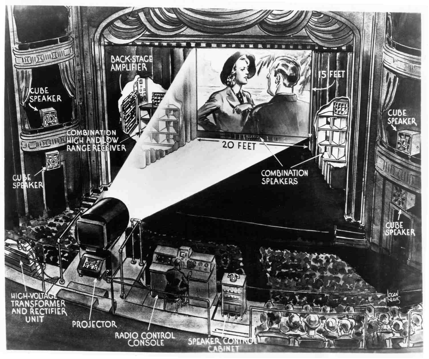Introduction
The subject of digital cinema has generated enormous interest in the theatrical distribution, movie production and postproduction industries over the past year. We have seen a number of highly publicized demonstrations, the studios are actively funding development programs and major equipment vendors are presenting solutions and looking for their first big customers. This paper is a personal perspective on digital cinema; it attempts to describe the state of the business as well as point out some of the advantages and problems we’re likely to face when digital cinema eventually becomes a bonafide industry.
The Good News and The Bad News
It is generally agreed, even among the “golden eyes” in our industries, that a digital cinema system will be capable of at least duplicating typical moviegoers’ experience of today. In the digital future, people will no longer pay good money to watch scratched up, dirty film prints with washed out, inconsistent color and gate weave. Instead, they will pay to experience system crashes and software bugs.
The Big Questions
At this time, there is not general agreement about the central question for digital cinema. Are we trying to:
create a system to duplicates or even incrementally improves on the best quality 35mm theatrical film experience?
or
create a system that goes well beyond today’s experience and show movies with very substantially improved visual fidelity that provide a much more absorbing, realistic environment for feature films? (Obviously, a system like this might ultimately change the way movies are made and promoted and perhaps even raise the expectations of the audience.)
Several people have pointed out something resembling Option b. has been available for about 50 years and yet is hardly ever used: 65mm film. And the primary reason 65mm isn’t widely used today?: Cost. The movie business is, after all, a business. The studios, distributors, exhibitors and audiences have made a collective decision that the improvements in image quality available from 65mm film aren’t worth the extra money. Based on this, can we expect that moviegoers will be willing to pay even one extra dollar to see a movie in a digital format?
We must give cost major consideration in any system. Most of the money will be spent on equipping the theaters with the necessary new digital equipment, of course, but we can’t forget the costs of mastering, archiving, handling, moving and protecting digital versions of feature films. In addition, the movie distribution system will have to support 35mm film as well as its digital equivalent for a long time. Many thousands of 35mm film projectors will still be operating when we’re all happily retired.
Additional big questions need to be asked as well: Do we want a system that allows filmmakers to send different versions of the movies to different regions of the country, or to send out slightly different versions over time in order to attract larger audiences? Should the system allow filmmakers to continue their creative work until the day (or hour) before the scheduled release? And perhaps the biggest question of all: Who’s going to pay for all this?
